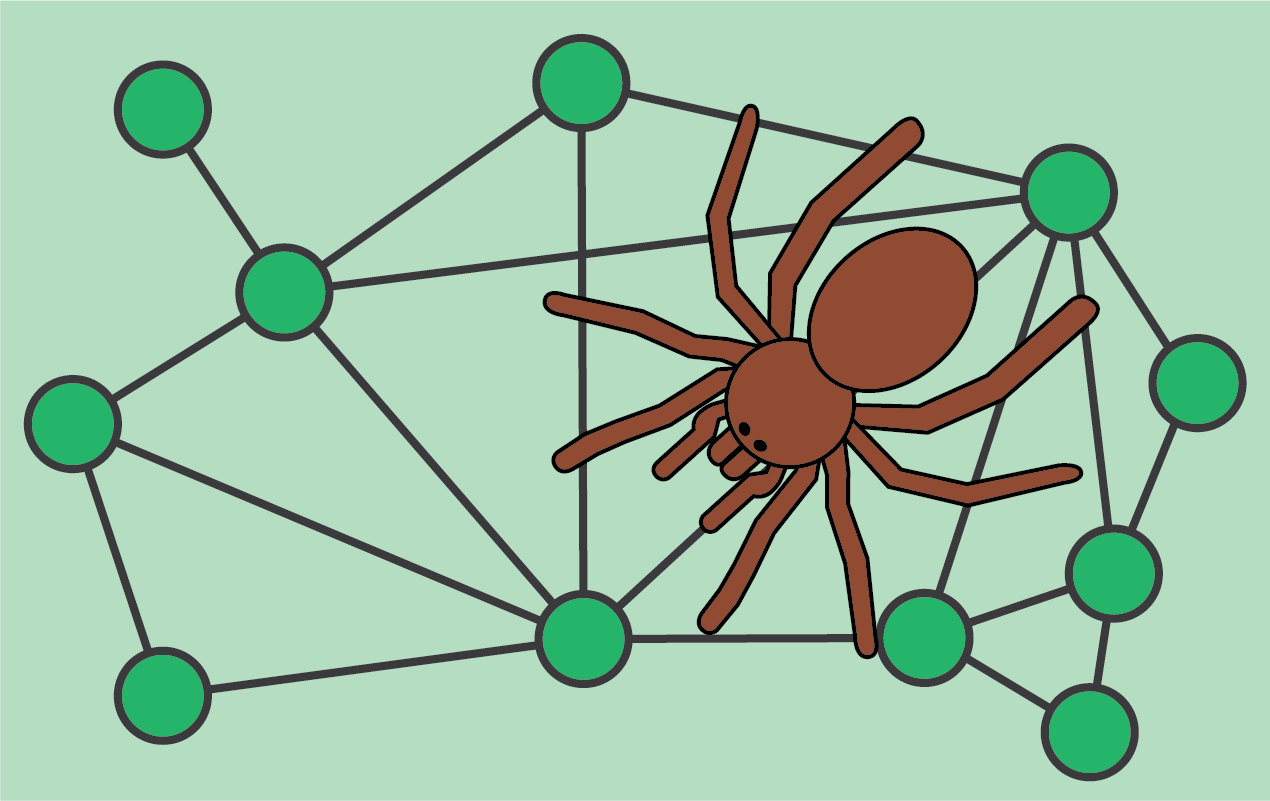
MossSpider¶
mossspider provides an implementation of a targeted maximum likelihood estimator (TMLE) for network-dependent data
with stochastic policies (network-TMLE) in Python 3.6+. For in-depth details on network-TMLE, see van der Laan (2014),
Sofrygin and van der Laan (2017), or Ogburn et al. (2017). mossspider get its name from the
spruce-fir moss spider, a tarantula that is both the world’s
smallest tarantula and native to North Carolina.
Network-TMLE is an estimator for causal effects with network-dependent data. Network-TMLE here further relies on a weak dependence assumption (only the immediate contacts of a unit have an effect on that unit’s outcome) to make progress in this setting. This is further accomplished via parametric summary measures of immediate contacts’ covariates. The following is a brief overview. For further details, please see the references below.
Here, the estimand is the expected mean of an outcome under a policy (indicated by \(\omega\)) for a
super-population of networks each consisting of \(n\) units. Due to assumptions for the variance, mossspider
focuses on this estimand, but is further conditional on the distribution of \(\mathbf{W}\) covariates in the
network. This estimand can be written as
where \(A_i\) is the action of interest for unit \(i\) (with \(\mathcal{A}\) indicating the support), \(A_i^s\) is a generic summary measure of the actions of \(i\)’s immediate contacts ((with \(\mathcal{A}^s\) indicating the support)), \(Y(a,a^s)\) is unit \(i\)’s potential outcome under action \(a\) and actions \(a^s\) of their contacts, and \(\mathbf{W} = \{W_1, W_2, ..., W_i, ..., W_n\}\). The values of \(a\) and \(a^s\) are assigned according to the policy \(\omega\) indicated by \(\Pr^*(A_i=a, A_i^s=a^s | W_i, W_i^s)\).
For identification of \(\psi\), we rely on the following assumptions: causal consistency, exchangeability, and positivity. Respectively, these are written as
These assumptions further require that (1) the network is perfectly measured, and (2) the parametric from of the summary measure \(A^s\) is known. This set of assumptions is unverifiable and thus needs to be based on substantive knowledge.
Given these assumptions, \(\psi\) is identified and we can estimate using network-TMLE. For how network-TMLE
operates (as implemented in mossspider) see the Overview page on the sidebar.
Installation:¶
mossspider can be downloaded using PyPI. To install mossspider, use the following command in terminal or
command prompt
python -m pip install mossspider
There are several dependencies for mossspider. These consist of NumPu, SciPy, Pandas, NetworkX, statsmodels, patsy,
and Matplotlib. Note that NetworkX must be at least version 2.0.0 to operate properly.
To replicate the tests in tests/ you will need to install pytest (but this is not necessary for general use of
the package).
Contents:¶
Code and Issue Tracker¶
Please report bugs, issues, or feature requests on GitHub at pzivich/MossSpider.
Otherwise, you may contact us via email (gmail: zivich.5) or on Twitter (@PausalZ)
References¶
Ogburn EL, Sofrygin O, Diaz I, & van der Laan, MJ. (2017). Causal inference for social network data. arXiv preprint arXiv:1705.08527.
Sofrygin O, & van der Laan MJ. (2017). Semi-parametric estimation and inference for the mean outcome of the single time-point intervention in a causally connected population. Journal of Causal Inference, 5(1).
van der Laan MJ. (2014). Causal inference for a population of causally connected units. Journal of Causal Inference, 2(1), 13-74.